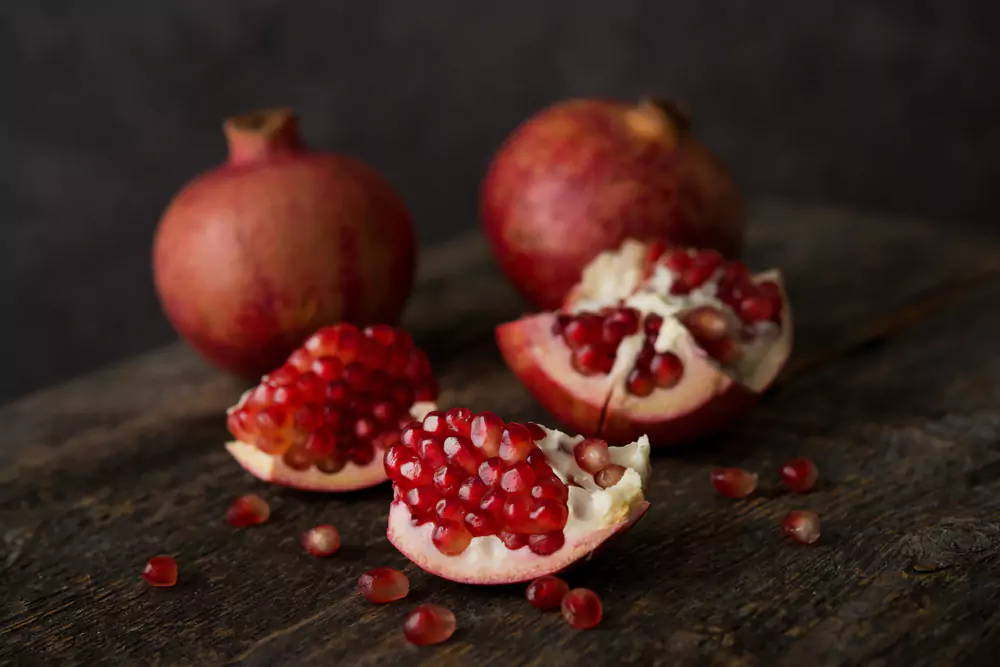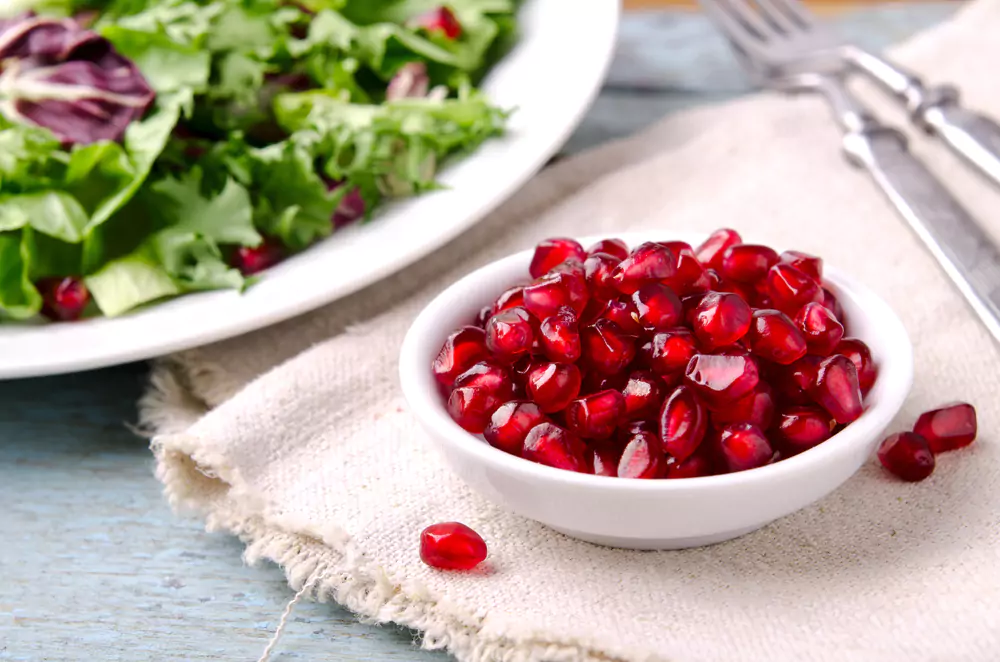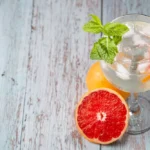Pomegranate seeds are a nutritious and delicious addition to many dishes, but they can be messy. One solution to this problem is to use a pomegranate seed covering, which can help protect the seeds from damage during transportation and storage. This guide will explore what pomegranate seed covering is, its benefits, and how to use it.
What Is Pomegranate Seed Covering?
The shell of the pomegranate seed is called an aril. The aril is a fleshy, juicy, translucent membrane surrounding pomegranate seeds. It is the edible part of the seed known for its bright red color and sweet and sour taste.
Aril is rich in antioxidants, vitamins, and minerals, so it is a nutritious addition to various foods and drinks. Eating the arils with the seed is customary when consuming pomegranate seeds, as they provide a pleasant texture and enhance the overall taste experience.
Composition Of The Covering On Pomegranate Seeds
The pomegranate seed coat, also known as the aril, is a unique and complex structure that plays a crucial role in protecting and dispersing the seeds. An aril has several layers, including the exocarp, mesocarp, and endocarp.
The exoshell is the outermost layer that provides a protective barrier against external factors such as pathogens and physical damage. Below the exocarp is the mesocarp, which is responsible for the bright red color of the aril and is rich in antioxidants.
Finally, the endocarp surrounds the seed, providing additional protection and support. The composition of aril contributes to its distinctive texture and flavor, making it a desirable ingredient in various culinary foods and beverages.
Purpose Of The Covering On Pomegranate Seeds
The covering on pomegranate seeds is called the aril. The aril serves several purposes:

Protection:
The aril protects the seed from mechanical damage and insect predation. It also helps to prevent water loss from the source.
Nutrient storage:
The aril contains nutrients such as carbohydrates, proteins, and minerals that are important for the germination and growth of the seedling.
Seed dispersal:
When the fruit is ripe, the aril helps disperse the seeds by breaking off the seed and carrying it away from the parent plant. This helps to spread the seeds to new areas and promote the growth of new plants.
Seed recognition:
The aril can help recognize and distinguish the seed from other sources. This is important for seed germination and plant growth.
Antioxidant activity:
The aril has been found to have antioxidant properties, which can help to protect the seed from oxidative stress and damage.
How Does The Covering Protect The Seeds?

The covering of the pomegranate, known as the pericarp, acts as a protective layer for the seeds inside. The mushroom membrane consists of two main layers: an outer shell called the exocarp and an inner membrane called the endocarp. These layers protect the delicate seeds from external factors such as physical damage, pathogens, and desiccation.
The exocarp acts as a barrier against mechanical stress and prevents the entry of microorganisms. It also helps retain moisture in the fruit, ensuring seed hydration. The endocarp provides an additional layer of protection, tightly sealing the seeds and preventing them from being easily damaged.
In addition, the seed coat contains antioxidants that help maintain the quality and freshness of the seeds. Covering a pomegranate is crucial to protect its sources and ensure its viability.
Health Benefits Associated With Consuming The Covering Of Pomegranate Seeds
Pomegranate seeds’ coating, or aril, is a tasty and healthy fruit component that is sometimes disregarded. On the other hand, eating the arils has several health advantages. The following are some of the main benefits of eating arils:
Anti-Inflammatory Effects
Anthocyanins and ellagic acid, two anti-inflammatory substances found in pomegranate seeds’ arils, have been demonstrated to lessen inflammation in the body.
Numerous illnesses, including arthritis, cancer, and heart disease, are linked to chronic inflammation. Eating the arils can reduce these symptoms and enhance your general health.
Antioxidant Properties
Antioxidants such as beta-carotene, vitamins C and E, and other polyphenols are abundant in pomegranate arils. These substances aid in shielding cells from the aging process and the onset of chronic illnesses by preventing the harm that free radicals may do. Eating the arils can improve your diet’s antioxidant content and promote general wellness.
Cardiovascular Health
Pomegranate arils’ fiber, vitamins, and minerals may promote cardiovascular health. While vitamins and minerals can help control blood pressure and stop plaque buildup in the arteries, fiber can assist in decreasing cholesterol and improving blood sugar regulation.
Furthermore, the antioxidants in the arils could aid in defending the cardiovascular system against oxidative stress and inflammation.
Immune System Support
Immunomodulatory substances found in pomegranate arils have the potential to modulate the immune system. These substances can increase white blood cell production, crucial for preventing illnesses and infections. Furthermore, the antioxidants in arils could aid in preventing oxidative stress, which can impair immunity.
Can The Covering On Pomegranate Seeds Be Used For Any Other Purposes?
Also known as arilli, pomegranate seeds can be used for purposes other than consumption. These little juice bags are encased in a strict leather shell that can accommodate many uses. Pomegranate seed coating can be used in the following ways:
Culinary Uses:
Pomegranate is consumed fresh or used as an ingredient in various culinary preparations. They add a tangy sweetness to salads, desserts, smoothies, and cocktails. The vibrant red color of the arils also makes them visually appealing for decoration.
Juice and Syrup Production:
Pomegranate juice is often pressed to extract the juice, which is then used to make pomegranate juice or syrup. These products are famous for their rich taste and high antioxidant content. Aril caps are usually discarded during juicing.
Natural Dye:
Pomegranate arils’ rich red hue may be a natural dye for fabrics and other materials. The aril covers can be boiled to produce a vivid crimson dye. You may use this dye to color papers, textiles, yarns, and even natural paints.
Cosmetics and Skincare:
Antioxidants and polyphenols, which are present in pomegranate aril coatings, are advantageous substances that have been linked to several skincare advantages. Because of their possible anti-aging and moisturizing qualities, extracts from these covers are used in cosmetic goods such as creams, lotions, and serums.
Medicinal Uses:
Pomegranate aril coverings have been used in traditional medical systems because of their possible therapeutic benefits. Because of their astringent qualities, they have been used to cure conditions including intestinal parasites, diarrhea, and dysentery. It is crucial to remember that much scientific study has yet to be done on these applications; therefore, speaking with a healthcare provider is suggested.
Is It Safe To Consume The Covering On Pomegranate Seeds?
The pomegranate seed coating is safe to eat. The juicy, edible portion envelops the seed is the covering or aril. It is a beneficial addition to your diet because it contains minerals and antioxidants. However, the personal choice may vary since some people may find the aril’s texture or flavor disagreeable. Eating the coating on pomegranate seeds is not known to pose any health hazards.
Conclusion
To sum up, this thorough guidance has offered a thorough examination of the pomegranate seed coating. We have discussed its many parts, such as the edible seed, an aril, the white membrane, the pith, and the outer skin, the pericarp. We have also explored pomegranate seeds’ nutritional worth and health advantages, emphasizing their high antioxidant content and their benefits for reducing inflammation, heart disease, and cancer.
FAQs
Should You Chew Pomegranate Seeds?
Yes, you can chew pomegranate seeds as they are safe to consume and offer various health benefits. However, some people may prefer to spit out the roots due to their texture or personal preference.
Can You Eat The Hard Part Of Pomegranate Seeds?
Yes, the hard part of pomegranate seeds, known as the arils, is safe to eat and is the edible part of the fruit.
What Are Pomegranate Arils?
Pomegranate arils are the juicy, seed-like structures found within a pomegranate fruit. They are the edible, fleshy parts that surround the seeds of the fruit, and they are rich in nutrients like vitamins C and K, as well as antioxidants.
What Is The Difference Between Pomegranate Seeds And Arils?
The main difference between pomegranate seeds and arils is that the seeds refer to the complex inner part of the fruit, while the arils are the juicy, edible seed casings surrounded by a translucent red pulp.
Is It Safe To Eat Pomegranate Seeds?
Yes, it is safe to eat pomegranate seeds. They are edible and packed with nutrients and antioxidants that offer various health benefits.






